Ijraset Journal For Research in Applied Science and Engineering Technology
- Home / Ijraset
- On This Page
- Abstract
- Introduction
- Conclusion
- References
- Copyright
Advances in Sensor-Based Detection and Machine Learning for Osteoporosis: A Comprehensive Survey of Diagnostic Techniques
Authors: Vijayashree R Budyal, Disha H N, Inchara H Suresh, Shreyas V Bhatt
DOI Link: https://doi.org/10.22214/ijraset.2024.59072
Certificate: View Certificate
Abstract
One of the biggest challenges in the field of healthcare is the early identification of bone diseases. The increasing demand for diagnostic services often overwhelms current approaches, leading to increased healthcare costs, delayed identification, and patient discontent. To solve this problem, an Osteoporosis Early Detection System incorporating Biosensors and Machine Learning via the Internet of Things (IoT) is desperately needed. Osteoporosis difficulties and increased health risks are similar to congestion challenges that they might arise from delayed diagnosis. The scarcity of adequate technologies for early osteoporosis detection hinders effective healthcare delivery, especially in areas where the condition is more prevalent or during screenings that need quick identification. In order to enable prompt identification and notify medical professionals for preventive action, certain healthcare institutions have started including biosensors that can track changes in bone density. The development of these technologies could revolutionize the early diagnosis and treatment of osteoporosis and lessen the effects of the condition on patient’s health outcomes.
Introduction
I. BACKGROUND/LITERATURE SURVEY
Osteoporosis is a disease that reduces the quality and quantity of bones, making them weak and more likely to fracture. Osteoporosis can affect men and women, but women are at greater risk of developing it. This disease is rather a more serious problem for the postmenopausal women and elderly people. According to [[1]] an IoT-based portable sensing device for measuring the serum CTx-I molecule was developed. The artificial antibodies prepared by molecular imprinting technology were used to introduce selectivity of CTx-I to a planar interdigital sensor. Most CTx-1 measurement devices currently on the market utilize the ELISA technique. While ELISA-based systems are known for their reliability, sensitivity, and accuracy, they come with significant drawbacks such as high cost, time- consuming procedures, and the need for technical proficiency. Consequently, these ELISA-based devices are not ideal for routine Point-of-Care (PoC) testing. There is a strong demand for affordable sensing systems that leverage the principles of ELISA while offering rapid response times.

Sheep blood samples, gathered under approval number 14/103 from the Massey University Animal Ethics Committee, were obtained between 8 am and 10 am from fasting animals to account for the circadian rhythm of CTx-1. Upon collection, the samples were promptly placed on ice and centrifuged at 4°C within one hour. Following centrifugation, they were divided into cryovials and stored at -80°C until further analysis. Prior to experimentation, the samples were thawed in the refrigerator for 30 minutes. Subsequently, unknown sheep blood samples were analyzed using a Point-of- Care (PoC) device to quantify CTx-1 levels. To validate these results, a commercial serum Cross Laps® ELISA kit was employed. The findings from both methods are summarized in Table 1, with a comparison depicted in Figure 2.

The analysis reveals that the data obtained from the PoC device closely align with those from the standard method, with an error margin of ≤ 3%. Additionally, it's observed that the error rate tends to be higher at elevated concentrations.
There are various current methods used for detection and smart health care systems involved in current technology. In [[1]] there are methods listed out and its functionalities. Starting with DXA, the gold standard for bone mineral density measurement, utilizes X-ray beams at different energies to quantify BMD. It estimates bone mineral content by comparing attenuation ratios between high and low energy X-rays. DXA systems vary in X-ray generation, energy range, detectors, and scanning methods among different manufacturers. Vertebral Fracture assessment and Trabecular Bone Score are two types of the DXA scan that are mentioned. Computed tomography (CT) produces cross-sectional images by rotating X-ray beams around the patient, generating a series of contiguous images. These grayscale representations quantify relative attenuation in structures. Quantitative CT (QCT) goes beyond visual analysis, measuring parameters and bone texture, estimating, for instance, vertebral strength via finite element analysis from QCT scans. Magnetic Resonance Imaging, leveraging magnetic fields, visualizes organs with soft tissue contrast by capturing emitted RF signals from excited hydrogen atoms in tissues like water and fat. Bone characteristics for assessing vertebral fragility or fractures are derived from pre-processed and segmented MRI images, extracting features for classification. Advancements may enable osteoporosis screening tools. Quantitative Ultrasound methods aim to replace DXA, offering non-invasiveness, portability, and cost-effectiveness. Yet, like DXA, quantitative ultrasound (QUS) systems vary in measurements across devices and require calibration and operator training, limiting their reliability. Heel QUS is recognized for fracture risk assessment but not treatment monitoring. Secure IoT communication is required to fetch data from the particular senor to the system. In [[2]], it proposes integrating AI technologies like neural networks and fuzzy systems into a secure healthcare monitoring system. Physiological data from patients is collected, authenticated, and transmitted to Azure IoT Hub via GSM for analysis. Through fuzzy-based inference, the system determines patient status, ensuring reliable, accurate, and real-time monitoring. This system utilizes a PIC16F877A microcontroller to gather data from sensors like temperature, pulse oximeter, and blood pressure, transmitting it securely via password- protected GSM for real-time monitoring by doctors. The HTML web page access ensures authorized user entry while allowing emergency alerts for swift medical response.
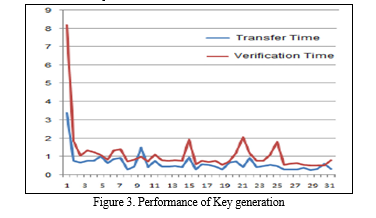
The performance of the proposed system shows that the key generation time is the highest among the transfer and verification time. Furthermore, the suggested scheme reduced the overhead of the authentication time as compared to the other existing authentication schemes in healthcare monitoring systems because the key transfer time and verification time produces a lower amount of overhead. It is evident from Figure 3 that the key generation time is the highest among the transfer and verification time.
In [[3]], the work focuses on the application of artificial intelligence (AI) to medical imaging-based osteoporosis diagnosis using a systematic review and meta- analysis. The review aims to provide insights into the potential utility, accuracy, and limitations of AI technology in enhancing osteoporosis diagnosis utilizing medical imaging techniques by compiling and analyzing existing data. Using medical pictures, this meta-analysis evaluated the diagnostic accuracy of AI- based systems in osteoporosis. Extensive research involving 3186 patients demonstrated great specificity (0.95) and sensitivity (0.96). Osteoporosis (OP) is a dangerous condition for which prompt diagnosis is crucial. Although there are some traditional methods for diagnosing this illness these days, they have drawbacks and may not always yield accurate information when the illness is developing. It is therefore necessary to create a new method for the early detection of Osteoporosis. This includes a novel approach based on Micro Electromechanical System (MEMS) technology.
[[4]] The primary focus is on Osteoporosis early detection. To develop a better Osteoporosis detection methodology, new kinds of Osteoporosis detection techniques are based on biomechanical, optical, and electrochemical principles. For design, manufacture, and characterization, a novel microfluidics biome MS device and a new amperometric immunosensor utilizing gold nanoparticles will be presented as a point of care testing (POCT) method. The study covered is primarily divided into three sections: the design and construction of an amperometric immunosensor and a Biome MS chip; basic measurements on the physical, biomechanical, optical, and chemical aspects of normal and OP bones and serum.
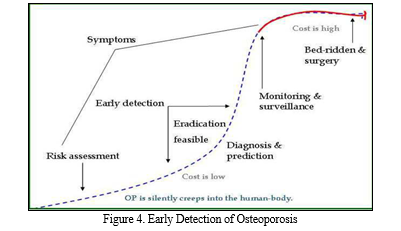
The patient may not know when the disease creeps into the body. The symptoms may include back pain, toothache and some hunch-over. It is necessary to analyze and predict the risk at early stages as it reduces the cost as well as major injuries. Figure 4 gives a brief on what steps must be taken to prevent fractures in osteoporosis prone patients. If the risk is not assessed and monitored in a timely manner, it will be difficult to eradicate the disease. Moreover, the patient may have to undergo surgery and be bedridden.
These days, since it can save patient’s lives, ongoing patient health monitoring is becoming a top priority for physicians. Therefore, the goal is to create a patient monitoring system that can track a variety of physiological parameters for a patient who is located remotely and provide the physician with access to this real-time data with decreasing doctor’s visit. [[5]] This paper suggests a neural network- based generic health monitoring system that includes the Heart Disease Prediction System (HDPS). The HDPS system forecasts a patient's risk of developing heart disease. The system employs medical characteristics such as age, height, weight, blood pressure, and sex for prediction. Vital signs like temperature, EEG, and heart rate data are tracked in this proposed experiment utilizing an Arduino Uno. Here, the sensors for measuring the patient's body temperature, EEG, and heart rate are used. This suggested system's primary objective is to use an artificial neural network to estimate a patient's percentage risk of developing heart disease. Subsequently, the recipient system receives data from the server automatically. Figure 5 is the experimental setup of the Heart Disease Prediction System.
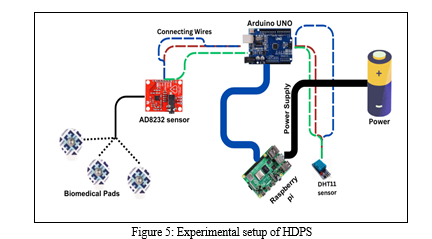
Osteocalcin is a protein primarily produced by osteoblasts, which are responsible for bone formation. It plays an important role in bone metabolism and is considered a biomarker for assessing bone turnover. Osteocalcin levels in the body are indicative of bone health and can be used to diagnose various bone-related conditions such as osteoporosis, osteopenia, and bone metastasis. In [[6]] the work describes a new POC-based immunoelectrochemical sensor that can quickly, accurately, and selectively detect osteocalcin. They show how the sensor works with portable electrochemical sensing equipment, which makes it a perfect tool for POC applications in emergency scenarios and environments with limited resources. In this work, an immunosensor was constructed using the modified PDA-Au/SPE electrode as the foundation.
In [[7]] the work presents an electrochemical genotyping platform for the rapid and cost-effective identification of genetic variants linked to osteoporosis. The approach uses ferrocene-labeled nucleoside triphosphates and solid-phase primer elongation to target particular SNPs linked to osteoporosis risk. This technique avoids DNA extraction and completes experiments in 15 minutes for 0.3€ per electrode. It has been confirmed with blood samples. It is a promising tool for point-of-need SNP genotyping because of its generic nature and automated deployment possibilities. In our daily lives, finding time to manage our healthcare and its monitoring is hard. The below figure depicts the experimental set up of the Electrochemical biosensor SNP Genotyping.
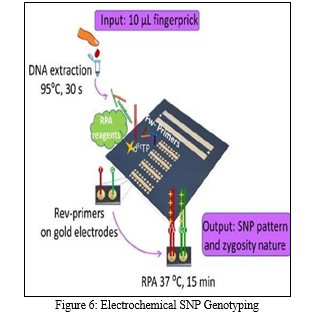
[[8]] This approach suggests using the Internet of Things to link a wearable wireless body sensor with adaptive neural intelligence for healthcare monitoring. ANFIS is used by wireless sensors to collect physiological data and create a smart monitoring system by autonomously prioritizing the data. Using ThingSpeak IoT, the prototype connects sensors to Wi-Fi and sends data to the cloud. ANFIS is trained to prioritize patient status by fuzzy logic at the central hub, which processes raw data. By focusing on emergency data transfer and guaranteeing continuous, real-time, and accurate patient data, the system offers a dependable healthcare monitoring solution.
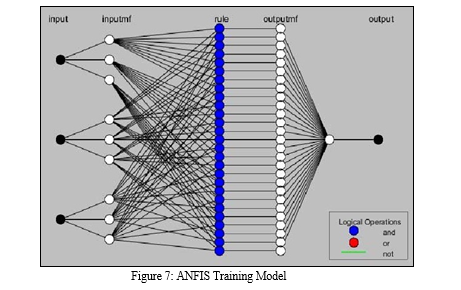
[[9]] Introduces the idea of focusing on assessing, diagnosing, and managing osteoporosis in postmenopausal women. In the EU, an estimated 18.44 million women possess fracture probabilities meeting or exceeding FRAX® thresholds, yet over 57% of high-risk individuals do not receive bone-specific treatment.
Furthermore, it describes about the methodologies of different technique that can be used for postmenopausal women without including much risk, which includes bone mineral measurements, clinical risk factors, biochemical assessment of fracture risk and introduction to FRAX.
The 10-year likelihood of a hip fracture and the 10-year probability of a major fracture (hip, clinical spine, humerus, or wrist) are determined using the computer-based method known as FRAX®.
In [[10]] this study, 13,421 postmenopausal Japanese women were measured for forearm bone mineral density (BMD) and FRAX, a fracture risk assessment tool, was evaluated. With a mean risk of 7.06%, FRAX predicted the risk of major osteoporotic fracture in the absence of femoral neck BMD.
Osteoporosis prevalence increased and BMD decreased with age. Setting a threshold of 7.2% for FRAX revealed osteoporosis in women over the age of 55, albeit with poor sensitivity, especially in middle-aged respondents. This suggests that the test may be useful for detecting osteoporosis in older cohorts but less so for screening younger people.
We have already discussed about detection of Osteoporosis in post-menopausal women. This survey [[11]] deals with creating and evaluating machine learning models and comparing them to the traditional osteoporosis self-assessment tool (OST), the research aims to improve osteoporosis risk assessment in postmenopausal women. The models were trained using prominent methods such as support vector machines (SVM), random forests (RF), artificial neural networks (ANN), and logistic regression (LR) using medical records from postmenopausal Korean women based on KNHANES V-1.
The results of the analysis demonstrated the improved performance of SVM over other machine learning models such as ANN, LR, and OST, with a noticeably greater receiver operating characteristic (ROC) area under the curve (AUC). SVM's capacity to predict osteoporosis risk was validated on the test set, and results showed an AUC of 0.827, accuracy of 76.7%, sensitivity of 77.8%, and specificity of 76.0%.
II. GAPS
|
PAPER |
TITLE |
METHODOLOGY |
OPERATING SYSTEM |
LIMITATIONS |
|
[1] |
Development of IoT-Based Impedimetric Biosensor for Point-of-Care Monitoring of Bone Loss |
ELISA kit |
Point-of-Care testing |
The device's reliance on sheep serum samples limits clinical use without human validation. Relying only on CTx-1 levels may restrict comprehensive bone health assessment. DXA scans, effective for osteoporosis, can be costly, posing financial challenges. |
|
[2] |
Osteoporosis Screening: Applied methods and Technological Trends |
DXA, CT-scan, X-ray, Quantitative CT(QCT), MRI Images, Quantitative Ultrasound |
HTML Webpage |
The analysis lacks a thorough examination and comparison of new therapeutic techniques, including their processes, precision, and utility in therapeutic contexts. It also fails to detail the limitations or challenges associated with these emerging methods. |
|
[3] |
Secure IoT communications for smart healthcare monitoring system |
Neural networks and Fuzzy system |
PIC16F877A Microcontroller |
The opacity of fuzzy systems and neural networks in healthcare can hinder trust. Focus on cost-effectiveness, resource needs, and data privacy is crucial for successful implementation in healthcare. |
|
[4] |
Application of Artificial Intelligence in diagnosis of Osteoporosis using medical images: a systematic review and meta – analysis |
Medical imaging techniques |
- |
Due to the small number of studies included in the analysis, the findings' generalizability and breadth of coverage may be impacted. A more thorough summary would be possible with a larger range of investigations. |
|
[5] |
Early Detection Techniques for Osteoporosis |
Micro Electro Mechanical System technology |
Amperometric immunosensor and biome MS chip |
The chapter examines MEMS technology for early osteoporosis detection, highlighting biomechanical, optical, and electrochemical aspects. It lacks detailed new procedure effectiveness, validation studies, practical implementation, and overcoming therapeutic use obstacles. |
|
[6] |
IoT Based Elderly Healthcare Monitoring System |
Neural network-based generic health monitoring system |
AD8232 Sensor, Arduino UNO, Raspberry pi, DHT11 Sensor |
Predicting cardiac illness solely based on heart rate, temperature, and EEG may oversimplify the diagnostic process. This approach lacks a comprehensive range of diagnostic signs, potentially limiting accuracy. It fails to clarify its role in clinical decision-making or whether it supplements healthcare professionals' diagnostic tools. |
|
[7] |
Detection of osteocalcin by point-of-care based immunoelectrochemical sensor |
POC-based immunoelectrochemical sensor |
PDA-Au/SPE Electrode |
The described methods are labor-intensive and time-consuming, lacking practical components crucial for clinical acceptance. These include robustness in real-world conditions, sample preparation, and usability. The immuno electrochemical biosensor, though effective, is not portable for further use. |
|
[8] |
Generic Platform for the Multiplexed Targeted Electrochemical Detection of Osteoporosis-Associated Single Nucleotide Polymorphisms Using Recombinase Polymerase Solid-Phase Primer Elongation and Ferrocene- Modified Nucleoside Triphosphates |
Electrochemical genotyping |
- |
The success of the platform is largely dependent on SNPs found through genome-wide association studies. Inadequate SNP coverage or any SNPs that these investigations overlooked could affect the overall diagnostic precision. The device is not available in every part of the world. |
|
[9] |
A Real Time Healthcare Monitoring System Based on Open Source IoT and ANFIS |
ANFIS |
ThingSpeak IoT |
Integrating adaptive neural intelligence (ANFIS) can increase system complexity, potentially impacting scalability and implementation ease. However, clinical validation is crucial for demonstrating effectiveness in improving patient outcomes and decision-making, a factor often overlooked. |
|
[10] |
European guidance for the diagnosis and management of osteoporosis in postmenopausal women |
FRAX Scan |
- |
Osteomalacia in the elderly can underestimate bone mineral density due to poor bone mineralization, a limitation of BMD. FRAX and clinical risk factors also have limitations in predicting fracture risk. |
|
[11] |
Fracture risk assessment tool (FRAX) and for the diagnosis of osteoporosis in Japanese middle-aged and elderly women: Chiba bone survey. |
FRAX Scan |
- |
The analysis is limited as forearm BMD may not fully represent overall bone health, FRAX lacks dose-response consideration for some risk factors, and findings are specific to postmenopausal Japanese women, limiting generalizability. |
|
[12] |
Osteoporosis Risk Prediction Using Machine Learning and Conventional methods. |
Machine Learning models (ANN, SVM, RF, OST) |
- |
There is limited context of data source and taken only from the Korean women. Even though the project concentrates on the machine learning it lacks the comparison metrics from its methods. |
IV. FUTURE WORKS
In the future, the landscape of osteoporosis diagnosis and healthcare monitoring is set to undergo transformative changes. The integration of IoT-based portable sensing devices, such as the one measuring serum CTx-I molecules, holds promise for early osteoporosis detection. This novel approach, utilizing artificial antibodies and molecular imprinting technology, offers a reliable method for bone loss detection.
Advancements in medical imaging and artificial intelligence (AI) bring about a paradigm shift in osteoporosis diagnosis. AI-based solutions demonstrate high specificity and sensitivity, particularly in medical imaging-based diagnosis. The systematic review and meta-analysis in [4] showcase the potential utility and accuracy of AI technology in enhancing osteoporosis diagnosis.
In the realm of patient monitoring, a neural network-based generic health monitoring system emerges, incorporating the Heart Disease Prediction System (HDPS). This system, presented in [6], tracks various physiological parameters remotely, providing real-time data to physicians and predicting the risk of heart disease.
Additionally, innovative technologies like Micro Electromechanical System (MEMS) devices and immunoelectrochemical sensors offer new methods for early osteoporosis detection. [5] Introduces a BioMEMS device and an amperometric immunosensor for point-of-care testing, while [7] presents a POC-based immunoelectrochemical sensor for quick and accurate osteocalcin detection.
Efforts to enhance genetic variant identification linked to osteoporosis risk are evident in [8], where an electrochemical genotyping platform offers a rapid and cost-effective solution without the need for DNA extraction.
The usage of the hardware sensor or any traditional method in [12] to collect the bone mass data to this detailed Machine learning model would increase the chance of detecting Osteoporosis more accurately and this method could be bought for lower costs.
The future work includes an Osteoporosis Early Detection System incorporating Biosensors and Machine Learning using Linear Regression Model via the Internet of Things (IoT). By keeping an eye on bone health indicators like osteocalcin, osteophosphorous, and C-telopeptide, a model that combines IoT devices and machine learning can identify pre- symptoms of osteoporosis risk. Data is gathered by sensors and sent over Wi-Fi to the cloud so that it may be accessed on any IoT platform. This confluence transforms healthcare by making it possible to detect and treat this significant but silent disease in a proactive, personalized manner.
Conclusion
In this extensive survey report, we examined a wide range of research articles related to bone health and osteoporosis. Our thorough investigation revealed several facets of this important profession, illuminating the difficulties associated with diagnosing, treating, and improving bone health from osteoporosis. The comprehensive study covered a range of diagnostic methods, emphasizing the shortcomings and new developments in approaches. Studies on bone mineral density measurement methods, including instruments for fracture risk assessment and dual-energy X-ray absorptiometry, have highlighted the difficulties and possible advancements needed for accurate diagnosis. Furthermore, studies on new biomarkers such as osteocalcin have shed light on their functions in bone turnover and osteoporosis diagnosis. The collection of papers included in this study demonstrated a move in the direction of creative solutions. Emerging technologies have shown promise as early detection and monitoring tools. Examples include AI-driven diagnostic systems and IoT-based biosensors. Opportunities for effective, affordable, and portable diagnostic solutions are presented by these technologies. The survey report acknowledged these developments but also explained their drawbacks, including financial restrictions, technological difficulties, and the requirement for additional validation through future research. It emphasized the need for ongoing research to close current knowledge gaps, improve diagnostic precision, and provide more approachable and user-friendly instruments for managing bone health and diagnosing osteoporosis. In the end, this study acts as a compass, directing future investigations towards comprehensive, successful methods of preventing osteoporosis and enhancing bone health.
References
[1] Nasrin Afsarimanesh, Md Eshrat E Alahi, Subhas Chandra Mukhopadhyay and Marlena Kurger, “Development of IoT-Based Impedimetric Biosensor for Point-of-Care Monitoring of Bone Loss”. IEEE Journal on Emerging and Selected Topics in Circuits and System Volume: 8, Issue:2, June 2018. [2] Mario A. de Oliveira, Raimes Moraes, Everton B. Castanha, Alexandra S. Prevedello, Jozue Vieira Filho, Frederico A. Bussolaro, David Garci?a Cava. “Osteoporosis Screening: Applied methods and Technological Trends”. Published by Elsevier Ltd on behalf of IPEM. October 2022. Volume: 108 [3] Hesham A. El Zouka, Mustafa M. Hosni, “Secure IoT communications for smart healthcare monitoring system”, Published by Elsevier Ltd Internet of Things January 2019. [4] L. Gao, T. Jiao, Q. Feng, W. Wang (9 February 2020). “Application of Artificial intelligence in diagnosis of Osteoporosis using medical images: a systematic review and meta–analysis”, International Osteoporosis foundation and National Osteoporosis foundation, February 2021. [5] Kanika Singh & Kyung Chun Kim. “Early Detection Techniques for Osteoporosis”, PhD, Yannis Dionyssiotis (Ed.) ISBN 978-953-51-0026, February 2012. [6] Amrit Kumar, Jayant Singh Kharwar, Arun Kumar Maurya, Aditya Mukherjee, Rashmi S. “IoT Based Elderly Healthcare Monitoring System”. International Journal for Research in Applied Science and Engineering Technology (IJRASET), volume:10, Issue: 4, June 202 [7] Xiaoya He. “Detection of osteocalcin by point-of-care based Immunoelectrochemical sensor.” International Journal of Electrochemical science”, 100273, Volume: 18, Issue: 9, September 2023. [8] Mayreli Ortiz, Mariam Jauset-Rubio, Olivia Trummer, Ines Foessel, David Kodr, Josep Lluis Acero, Mary Luz Botero, Phil Biggs, Daniel Lenartowicz, Katerina Trajanoska, Fernando Rivadaneira, Michal Hocek, Barbara Obermayer-Pietsch and Ciara K. O Sullivan. “Generic Platform for the Multiplexed Targeted Electrochemical Detection of Osteoporosis-Associated Single Nucleotide Polymorphisms Using Recombinase Polymerase Solid-Phase Primer Elongation and Ferrocene- Modified Nucleoside Triphosphates”, Published by American Chemical Society, July 2023. [9] Mansi Subhedar, Vrushali Jadhav, Shashank Tekade & Manish Prajapati “A Real Time Healthcare Monitoring System Based on Open Source IoT and ANFIS”. Proceedings of the Second International Conference on Intelligent Computing and Control Systems (ICICCS 2018) IEEE Xplore Compliant Part Number: CFP18K74-ART.ISBN : 978-1-15386-29=842-3, June 2018. [10] J A Kanis, C Cooper, R. Rizzoli, & J. -Y. Reginster. “European guidance for the diagnosis and management of osteoporosis in postmenopausal women”, Springer Open Choice, PMC7026233, October 2018. [11] Rena Oka, Masahiro Ohira, Sawako Suzuki, Tomohiko Yoshida, Hisashi Koide , Tomoaki Tanaka , Ichiro Tatsuno. “Fracture risk assessment tool (FRAX) and for the diagnosis of osteoporosis in Japanese middle-aged and elderly women”: Chiba bone survey. The Japan Endocrine Society: Endrocrine Journal, 193-202, February 2018 [12] Sung Kean Kim, Tae Keun Yoo, Ein Oh, Deok Won Kim, “Osteoporosis Risk Prediction Using Machine Learning and Conventional Methods”, 35th Annual International Conference of the IEEE EMBS, July 2013 .
Copyright
Copyright © 2024 Vijayashree R Budyal, Disha H N, Inchara H Suresh, Shreyas V Bhatt. This is an open access article distributed under the Creative Commons Attribution License, which permits unrestricted use, distribution, and reproduction in any medium, provided the original work is properly cited.

Download Paper
Paper Id : IJRASET59072
Publish Date : 2024-03-16
ISSN : 2321-9653
Publisher Name : IJRASET
DOI Link : Click Here
 Submit Paper Online
Submit Paper Online

